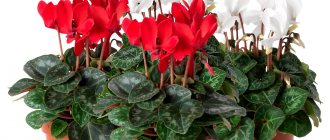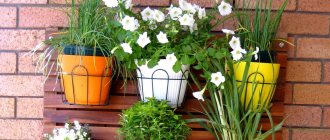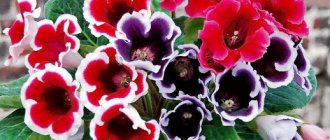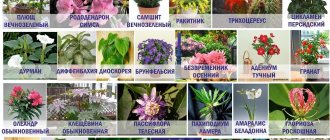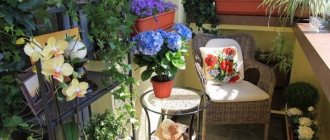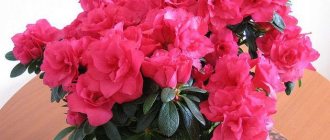Home Flowers Indoor flowers
The popularity of decorative mini-plants is quite justified. Miniature indoor flowers not only enliven the interior of the house, but also serve as a good alternative to bulky flowerpots with palm trees and ficus trees. A wide range of small plants makes them a godsend for lovers of creativity, who can fit an entire “garden” in one flower pot.
- 2 Echeveria
- 3 Haworthia
- 4 Decembrist
- 5 Crassula oval
- 6 Pedilanthus
Kalanchoe
Dwarf kolanchoe is a miracle of nature, which breeding scientists presented to the world in the form of several varieties, rich in a variety of colors: from white and cream to pink and bright red.
This decorative mini-plant is not afraid of the sun and prefers a lot of light. Small rose inflorescences of double or single flowers are collected in a neat bouquet, framed by frequent, succulent leaves.
Dwarf Kalanchoe rarely grows above 10-15 centimeters and is not at all demanding in care: it is enough to regularly water and replant the plant.
Despite all the advantages and visual attractiveness, it is very difficult to find dwarf varieties of Kolanchoe for sale. A miniature indoor flower retains its decorative properties all year round. And if you select the right pot, it looks like a stylish accessory.
Large indoor flowers
Large indoor flowers will find their place in large rooms with high ceilings. They perfectly serve as a decorative element; the leaves have different regular and bizarre shapes. Large plants will saturate an apartment or house with oxygen to the fullest, which miniature species cannot cope with. Principles for choosing a large plant:
- Easy to care for. It is worth studying the rules of watering, fertilizing, replanting a specimen and assessing your capabilities in terms of its maintenance.
- Growth rate. Whether quickly or for a long time, a representative of the species stretches in height.
- Room parameters. Huge crops will be out of place in a small apartment.
Indoor flowers with large leaves
Decorative foliage indoor plants
The large leaves of some plants are considered a natural filter in the room. Representatives of flowers with large leaves:
- allocasia;
- dieffenbachia;
- monstera;
- abutilone;
- aspidistra;
- syngonium.
Note! Dieffenbachia leaves are the most poisonous, like all representatives of the Araceae family.
Flowers with fleshy leaves
The flower stores water in its thick, fleshy leaves. If overwatered, such species may die. Common crops with fleshy leaves:
- fatsia;
- spurge;
- philodendron.
Echeveria
Echeveria is a succulent plant classified as a perennial herb. The diameter of the rosette is only 15 centimeters, and the height is from 10 to 30 cm. At the moment of flowering, the succulent is surprisingly transformed: it seems that the plant is made of artificial flowers.
Small bell-shaped corollas of pink, yellow or brown colors are located on a dense long stem-peduncle with a paniculate inflorescence.
The low-growing bush itself consists of a large number of leaf rosettes, colored bluish or bright green. Although the plant is unpretentious, its dense, fleshy leaves are quite vulnerable.
Each of them is covered with a thin whitish coating, under which moisture and nutrients accumulate. At the slightest touch, the delicate shell is easily damaged and the plant suffers.
To avoid this, you need to place the unusual flower under glass or cover it with film. The mini-flower needs good lighting, regular watering and weekly feeding with special nutritional mixtures for succulents.
Classification of house plants
In encyclopedias of indoor plant species, the following classification is most often followed:
| By shape | By appearance | In relation to the light |
|
|
|
A wealth of indoor plants
Bulbous plants
Flower growers love bulbous houseplants for their beauty and unusual appearance. Of interest is the part of the flower that is responsible for storing water and nutrients. This is an onion. The development of these unpretentious plants does not depend on the time of year.
The most famous representatives of the species:
- hyacinth;
- hippeastrum;
- amaryllis;
- crinum;
- zantedeschia;
- caladium:
- pancratium;
- wallota.
Indoor trees
Thanks to indoor trees grown in large pots or tubs, you can create a small oasis in your apartment or office. Large plants up to 1 m in height increase the humidity level in the room and remove dust particles and bacteria.
Trees grown indoors
Indoor trees include:
- a coffee tree;
- plants grown in bonsai style;
- codiaum;
- dracaena;
- olive Tree;
- ficus;
- hibiscus;
- Crassula;
- abutilone.
Bromeliad plants
There are about 50 species of bromeliads. This is a herbaceous exotic plant, its flower has the shape of a trench. Water drains through it, through a funnel. The leaves of the plant reach a length of 50 cm. Popular types:
- acanthostachis;
- ehmeya;
- billbergia;
- tillandsia;
- vriesia;
- Sandersonia.
Additional Information. Bromeliad is considered one of the first flowers to be brought from America to Europe.
Ampelous plants
The word "ampel" comes from the German language and literally means "hanging vase" for flowers and vines. An ornamental plant is called an ornamental plant, the stems of which either spread upward or creep along the floor. Representatives of the species are placed in hanging baskets and flowerpots.
Types and names of ampels:
| Decorative foliage | Budra, ivy, tradescantia, fittonia. |
| Beautifully flowering | Columnaea, aeschynanthus, duchesnea, fuchsia. |
| Succulents | Sedum, Aporocactus vine. |
Ampelous plants
Decembrist
Zygocactus Schlumbergera or Decembrist is a beautiful ornamental plant, which is a representative of the genus of epiphytic cacti. The main difference between the Decembrist and many other indoor plants is that its flowering begins at a time when most ornamental crops enter a dormant period.
If you keep watering the plant to a minimum for 6-8 weeks from the end of September, in winter the Decembrist will delight lovers of indoor plants with bright flowers of pink, red and orange or white.
If cacti usually respond well to sunlight, then the Decembrist requires obligatory shading, otherwise the final fragments of the stems will begin to die off. In general, the plant is not too demanding to care for. However, it needs adequate watering, diffused light and good air humidity.
If the Decembrist is provided with suitable conditions for development and growth, then it will delight with its flowering for 15-20 years. A compact bush strewn with graceful flowers looks very unusual in winter.
Mini roses
Who doesn't love roses?
There are probably no such people.
And how elegant is the bush, only 10-20 cm high, decorated with numerous flowers! It's impossible not to fall in love.
Miniature forms have all the colors characteristic of roses in their arsenal.
Many people face this problem: they brought a rose from the store, it stood for a while and dropped all its buds, then it was the turn of the leaves...
Not much pleasant. To prevent this from happening, immediately buy ready-made soil for roses and replant the plant.
Before doing this, remove the flowers and buds from the plant. Don’t be sorry, cut the shoots by about half. Even if you destroy all the beauty now, the plant will save energy and begin to adapt to the conditions of your home. After transplanting, spray the plant with Epin or Zircon and set up a greenhouse.
On a note:
After purchasing a rose at a garden center, it is better to immediately play it safe and root its cuttings. It turns out that from childhood the plant will live in the conditions of your apartment, which means it will get used to its climate much faster.
Crassula oval
Crassula oval is an unassuming semi-herbaceous plant, which in our country is more often called the money tree or the tree of happiness. The flower requires virtually no care.
All this plant needs is moderate watering, bright lighting and good air ventilation. The fat woman takes root well in sunny and bright corners of any apartment. It will look great in the company of relatives or other succulents as part of a decorative composition.
Miniature Saintpaulia violets
Those who always have “problems with places” are Saintpaulia collectors. Then it makes sense to switch to miniatures. The size of an adult mini Saintpaulia plant does not exceed 15 cm. These violets bloom very luxuriantly, sometimes the flowers and leaves are not visible because of the cap. To make plants make you happy, follow the advice of Igor Milekhin, a flower grower and collector.
- Mini violets do not require bright sunlight, so even with slight additional lighting they can bloom throughout the year. Select a small shelf or part of the table for them and install a fluorescent lamp above them. The distance from the lamp to the plants should be 15-20 cm, and the duration of additional lighting should be 10-12 hours.
- If you initially correctly prepare the soil mixture when planting, then within a year your babies will easily manage without fertilizing. I recommend this: black soil, leaf soil, sphagnum moss, sand (all components 1 part each), neutralized peat - 3 parts, superphosphate - 2 tablespoons per 10 liters of mixture, crushed charcoal.
- To provide indoor plants with the necessary air humidity, place the pots in any low and fairly wide container (pallet or wicker basket lined with film) and place wet moss on the bottom. Then, while watering the violets, moisten the moss at the same time.
- In addition to those “reduced” by breeders, there are also “naturally” small plants, for example, fittonia, episcia, soleirolia . Succulents such as haworthia, faucaria, echveria, pachyphytum , and various sedums are modest in size.
Lithops and conophytums are very small, they don’t even extend beyond the pot, but how beautiful they are during flowering! I would like to say a separate line about nerter . This little one doesn’t bloom very impressively, but when it’s completely covered with scarlet berries the size of peas, you just can’t take your eyes off it.
Note: Other indoor plants
- Many other plants also have miniature forms.
- For example, mini-schefflera and mini-radermacher are much smaller than their counterparts - only 15-20 cm each. Ficus is tiny and does not look like ficus - its thin creeping shoots are strewn with small leaves.
- Kalanchoe Blossfeld has miniature forms no more than 15 cm in height.
- Mini-gloxinias are as small as a fingernail, but they bloom no worse than ordinary ones.
- Schlumbergera also has abundantly flowering baby varieties.
Pedilanthus
The plant is named so because of the appearance of its spectacular inflorescences. So “pedilon” translated from Greek means “shoe”, and “anthos” means flower. It is because of the original flowers that the plant is popular among gardeners.
The appearance of pedilanthus is very diverse and can differ strikingly from each other depending on the climatic and natural conditions of their growth.
Pedilanthus titimaloides is a very pretty and unassuming plant, which is a highly branched small shrub. This plant has interesting foliage that is dark green with whitish flecks along the center and edges.
Pedilanthus largefruited is a succulent that has almost no foliage, but has large, round, water-storing shoots. Pedilanthus spurs looks like a small tree.
In indoor conditions, plants need regular and abundant watering, as they prefer highly moist soil. They are light-loving and thrive on sunny south-facing windowsills.
Most of our living spaces, unfortunately, are small in size, and not every gardener can afford to keep large indoor plants in a limited area.
In this case, compact representatives of ornamental crops, which are no worse than their tall counterparts, can become an original decoration of any interior.
Everyone can afford to choose a plant to their taste: beautifully flowering, deciduous or succulent. It can become part of a stylish decorative composition, and at the same time it will not take up much space in the apartment.
- Author: Inna Kiseleva
Features of climbing indoor plants: photos
Episcia
In appearance, this plant is a curly, low grass with a large number of lateral shoots. They are generally grown as trailing plants because they have unusually beautiful foliage . Caring for the plant is very simple. It loves diffused lighting, so in summer you need to protect it from direct sunlight, and in winter, on the contrary, place it in a well-lit place. You need to water the plant with soft water, carefully avoiding its contact with the leaves.
Soleirolia
This plant is a creeping plant . Its appearance resembles a ball. The stems in this ball are tightly intertwined. The leaves have golden or silver hues. Saltirolia feels great in summer in bright rooms, but direct sunlight should be avoided. But in winter, this plant requires additional light. Soleirolia is unpretentious . In summer, abundant watering is required, and in winter - moderate.
